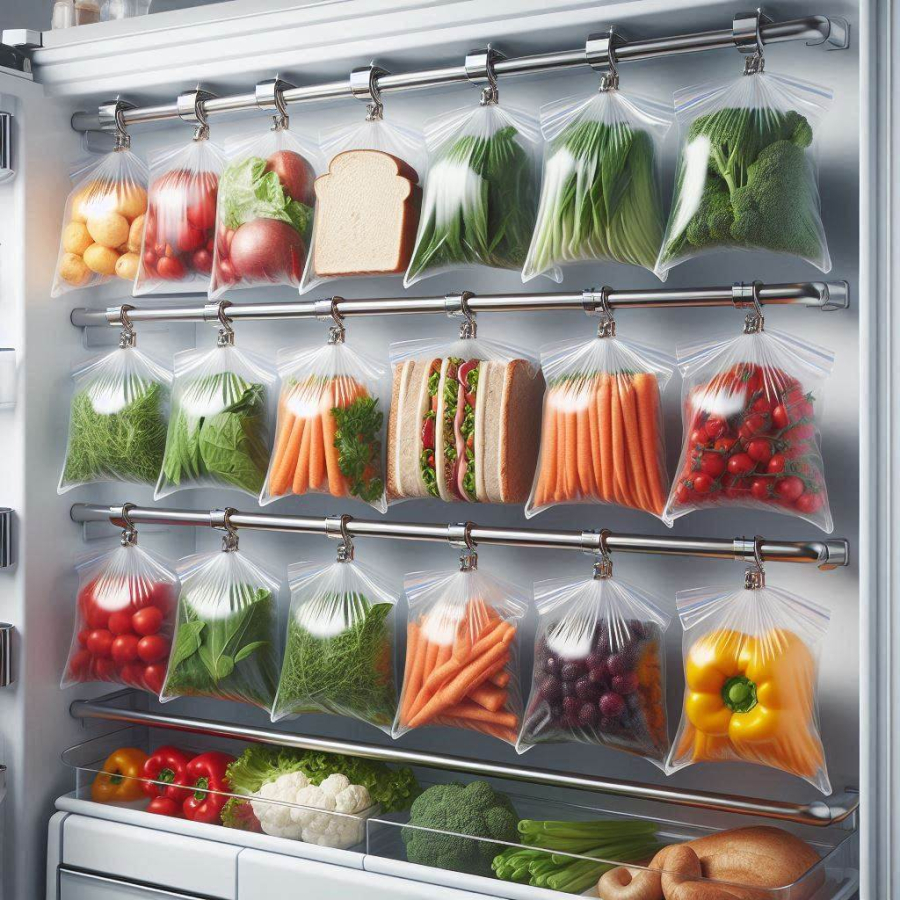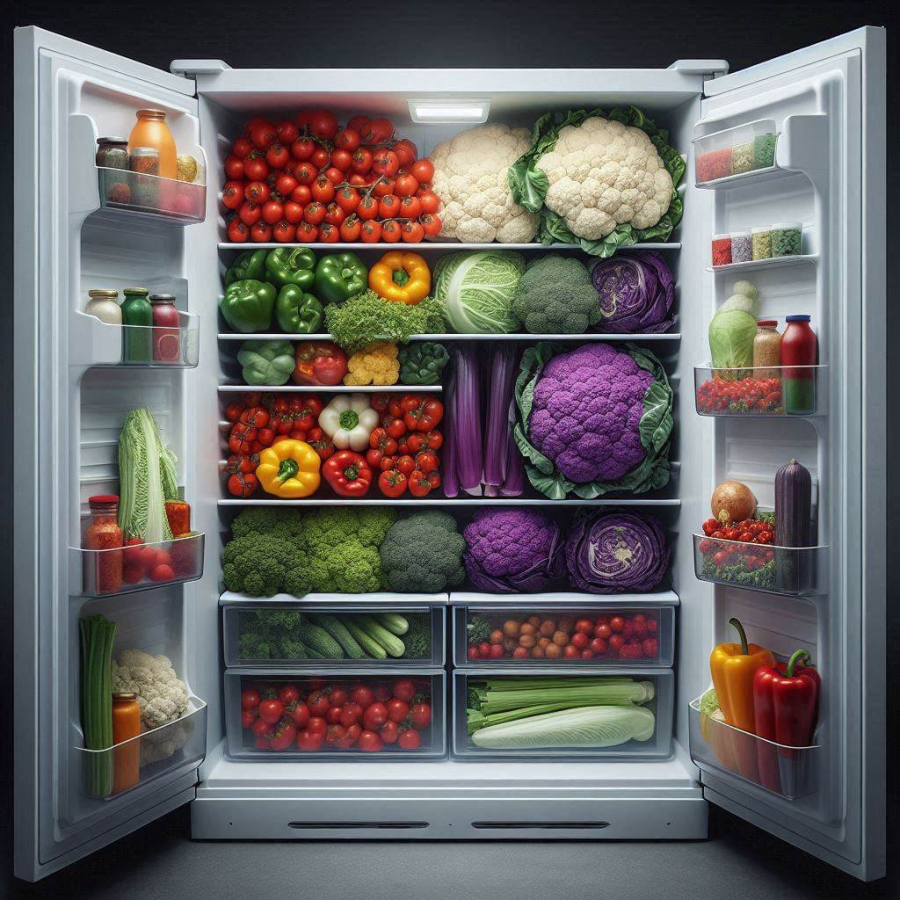Utilize Large Trays to Organize Items
To optimize space in your refrigerator, using large trays is an effective solution. You can easily find plastic trays at supermarkets or even reuse any you may already have at home. These lightweight yet durable trays help you sort your food reasonably, saving space and creating a tidy appearance.
If you want to arrange your fridge more scientifically, try labeling each tray. This will not only make finding food easier but also help you manage your food more efficiently, preventing waste and speeding up meal preparation.

Optimize your refrigerator space with large trays
Use Plastic Containers for Food Storage
Storing protein-rich foods like fish and meat in the freezer is an effective way to keep them fresh. First, clean and prepare the food, then place it into airtight plastic containers and put them in the freezer. These containers not only extend the shelf life of food but also help prevent odor transfer within the fridge, while optimizing storage space.
To avoid having to refreeze thawed food, divide it into smaller portions in separate containers according to your meal sizes. This practice maintains freshness and makes it more convenient to use.
Additionally, when choosing containers, opt for square or rectangular shapes as they can be easily stacked to maximize space. And don’t forget to label each container for easy identification and retrieval!
Use Clips and Magnets to Hang Food Bags
Food storage bags can be efficiently organized using clips and magnets. This method not only prolongs the shelf life of food but also allows you to maximize your refrigerator space.
These items are readily available on e-commerce platforms, making it convenient for you to choose and purchase them. By clipping and hanging food bags, you can neatly arrange your meals while reducing the worry of bag damage or loss.

Efficiently store food bags using clips and magnets
Place Snacks in the Center of the Chiller Compartment
For families with a high demand for snacks, organizing them logically is essential. A good idea is to keep snacks and candies in the center of the chiller compartment of your refrigerator.
This not only makes it easy for family members to access these treats but also reduces the tendency to r.ummage through the fridge, leading to a disorganized mess. When snacks are visibly and easily accessible, it not only keeps the fridge tidy but also saves time when you’re in a hurry.
Make Good Use of the Different Compartments in Your Fridge
Refrigerators are typically designed with two main compartments: the freezer and the chiller. Each compartment has a distinct function, and using them correctly will help you preserve your food more effectively.
The freezer is ideal for storing fresh produce that requires long-term preservation, such as meat and fish. On the other hand, the chiller should only contain ready-to-eat foods, milk, eggs, and juice.
Within the chiller compartment, you’ll also find a dedicated crisper drawer for vegetables, which has a temperature specifically adjusted to keep them fresh. For partially used or already cut vegetables, place them in the door of the fridge to easily remember and use them first, preventing them from being forgotten and spoiling.
Additionally, don’t forget to adjust the temperature of each compartment according to the type of food to ensure safety and freshness!

Your refrigerator typically has two main compartments: the freezer and the chiller
Arranging Food to Prevent Waste
When storing food in the refrigerator, it’s important to follow this rule: always place newer items at the back, while keeping older items at the front. This helps you easily identify and use older products, reducing food waste due to expiration.
Adopting this habit will improve your food management skills, allowing you to consume food in the correct order and within its shelf life, thus minimizing waste. This not only saves money but also contributes to environmental protection.
The Importance of Creating a List of Necessary Food Items
To effectively manage your food inventory in the refrigerator, it’s crucial to regularly check and create a list of items that need to be restocked. This way, you can accurately track the food you have, preventing overstocking or waste.
Knowing exactly what you need to buy will not only save you money but also reduce the chance of food spoilage due to not being used in time. Developing this habit will make grocery shopping easier and help you maintain a neat and clean refrigerator.






































